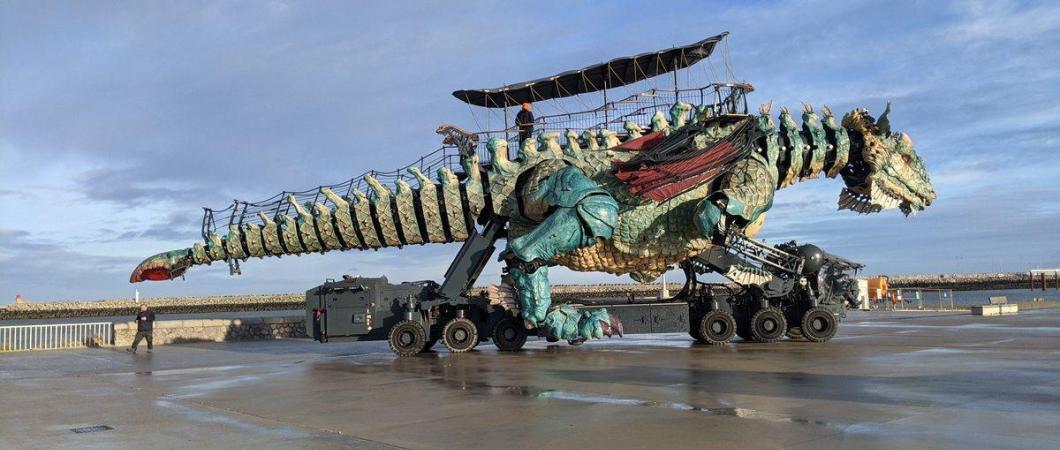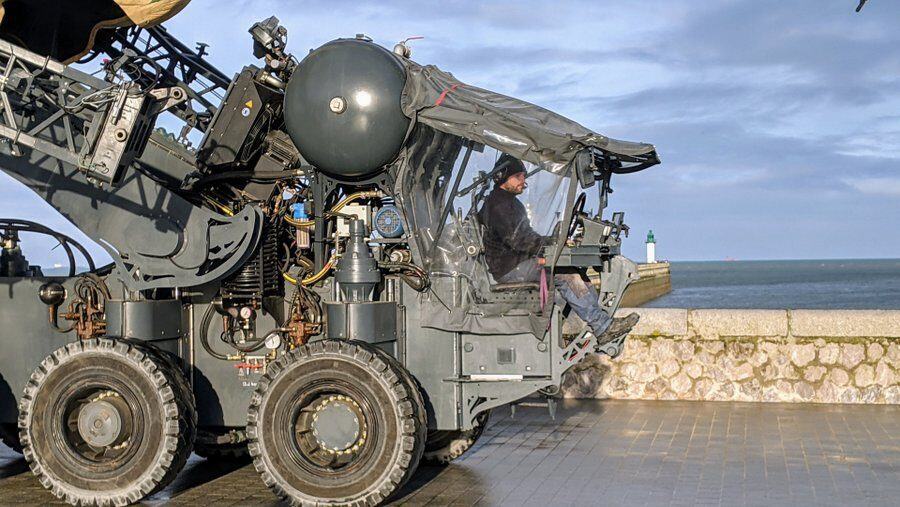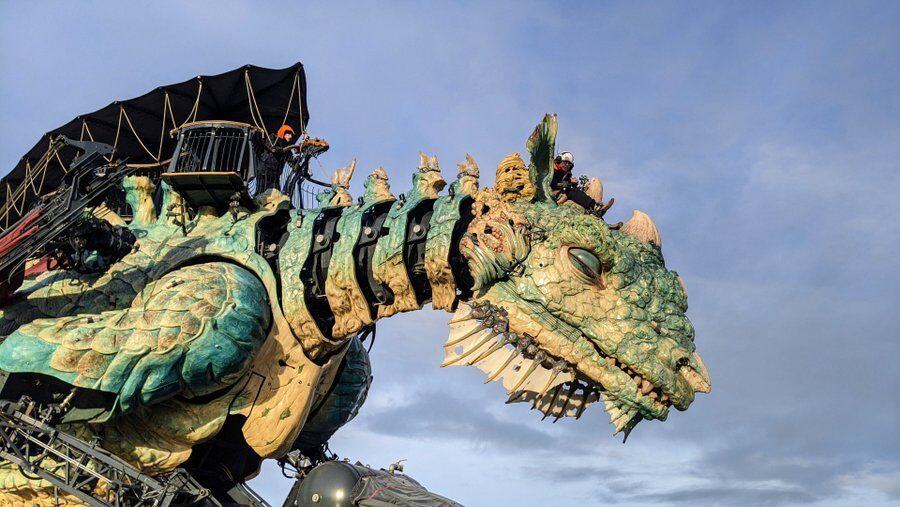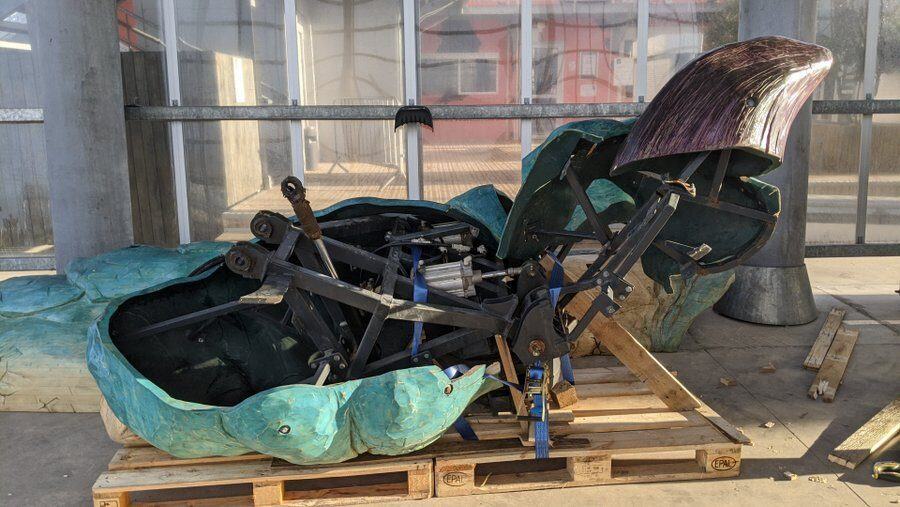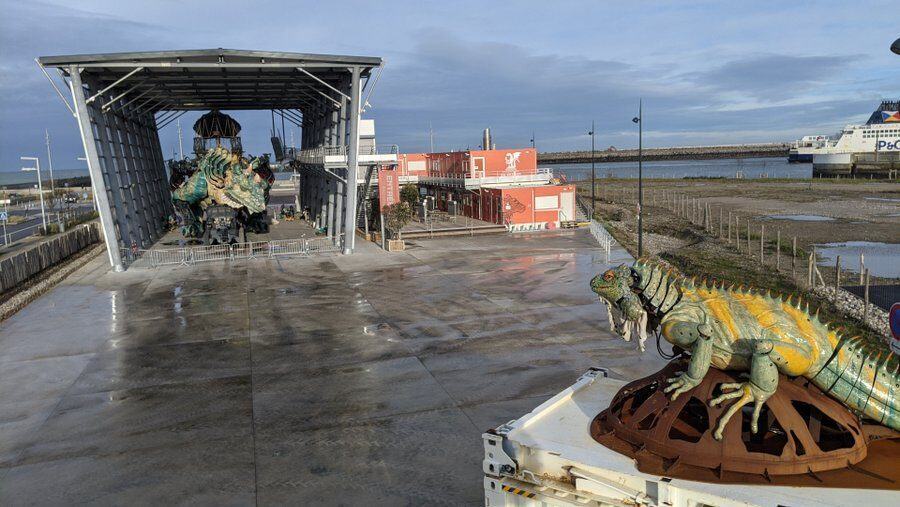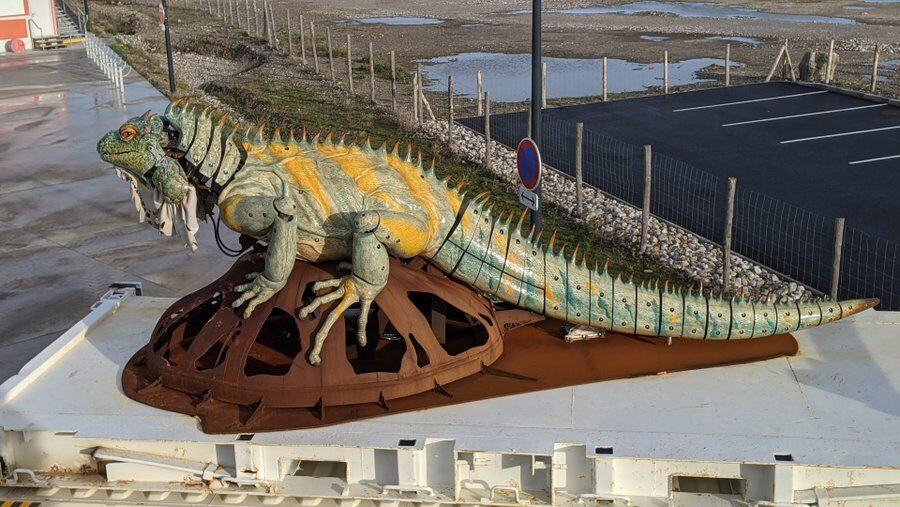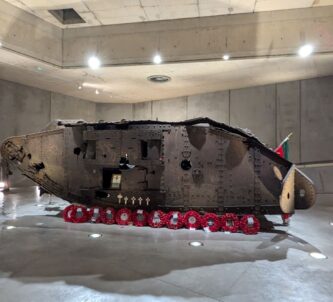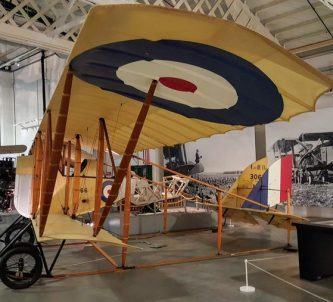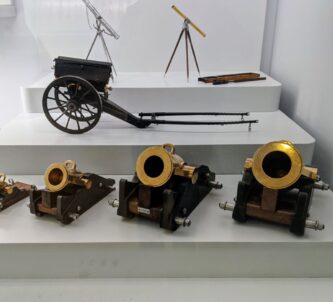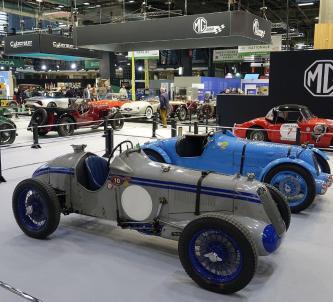The French seaside town and ferry port was expecting its famous mechanical dragon to be operating in the build up to Christmas and New Year, but COVID-19 struck again and so the Compagnie du Dragon has been using the downtime for a bit of maintenance.
I got to see him/her* on a short test outing the week before Christmas.
The concept
There are two geniuses behind all this…
François Delarozière is the creative genius behind La Machine, the street performance/production company based in Nantes whose team of artists, designers, engineers and mechanics make the extraordinary machines that he conjures from his imagination.
and…
Natasha Bouchart the Mayor of Calais (and vice-president of the Hauts-de-France region) who saw the potential of the project and drove it forward.
For her, and everyone in local & regional tourism marketing, this project tackles head on their biggest issue; getting people to stay.
Hauts-de-France (and Pas-de-Calais in particular) is a crossroads. Everybody in history, from Julius Caesar, Henry V & Napoleon to Kitchener, Montgomery & Guderian (chasing the BEF to Dunkerque) has passed through on their way to somewhere else.
And it is still that way today. In the summer months, motorists from the UK stream through the Channel Tunnel and off the ferries, to merge with holidaymakers from Belgium & the Netherlands on the A16 auto route heading for Paris & beyond.
It’s a great shame because there is much to see in the region, especially for history enthusiasts and Mechtraveller readers.
The Compagnie du Dragon project in Calais is designed to create what social artist Hugh MacLeod used to call “social objects”; things that people would gather around, experience, talk about and share. The dragon itself (there will be other ‘objects’ in this project) is exactly that.

Last summer, on a grey misty evening as the light was fading, I was on a DFDS cross-channel ferry pulling away from Calais, when suddenly there was a burst of flame on the shore. Everyone’s attention was caught by Le Dragon de Calais. You tell me. What parent is going to be able to resist their children clamouring to see the dragon, either straight away when they disembark in Calais, or on their return?! Tick! Job done, Madame Maire!
The Dragon
At 10 metres high, 25 metres long, and with a wingspan of 17.5 metres when fully extended (depending on wind conditions!), Le Dragon de Calais is the largest beast to emerge from the La Machine’s workshops in Nantes.
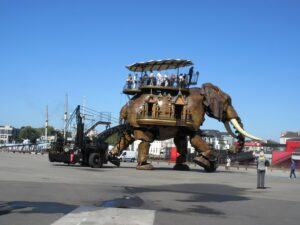
(Nantes is where the famous Grand Elephant** lives and is operated by Les Machines de l’Île along with the amazing ant, caterpillar and the creatures of the deep in the multi-layered Carrousel des Mondes Marins.)
It is also the most complex. Its 280 movements are powered by 2,600 litres of hydraulic fluid. By comparison the Grand Elephant has 120 movements.
Every machine that La Machine builds is unique and so are its parts, from the steel skeleton to the skin. The dragon’s skin is leather, canvas (wings) and wood, which surprised me. I assumed it was fibreglass. As an ex-theatre production manager I should have looked closer! It turns out the skin sections are moulded in laminated layers of wood then sealed, painted and glazed.
Of course, being a ‘one-off’ there are no spare parts, so this enforced winter maintenance break meant they could send the dragon’s two front feet back to Nantes for repair.
The 72-ton dragon can carry 49 passengers on its back, on a 30 minute trip along the seafront (1 hour round trip) at a serene 4 kph. Between arriving in Calais in November 2019 and before COVID restrictions kicked in, it was operating 4 round trips per day in winter and 7 to 8 round trips per day in the summer. The plan is that when the current renovation of the seafront is complete (it is being made much more suitable for roller-skating, cycling & pedestrians), the dragon will go further but with multiple get on/get off stops on the way.
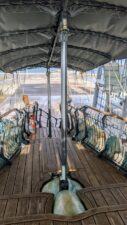
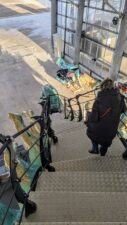
Access is simple, the tail drops down and there are steps embedded in it. There is wheelchair access at the dragon’s base, where a lift and bridge can get you on board, but wheelchair users then have to stay on board for the round trip.
One of the things I really appreciate about Delarozière’s work is that everything is not only engineered superbly, and built superbly – eg. most people would have used fibreglass not wood! – but it is the attention to detail. Everything is designed aesthetically. It’s not just the dragon itself but the Nave (see below) in which it will reside. It’s not just the Iguana, but even the stainless steel cover that goes over the remote control panel when not in use is beautifully designed. And here, on top of the dragon, where the tail operator needs to keep an eye of the hydraulic systems, the instrumentation is like a piece of steampunk art! Most engineers would have built a discreet digital panel!
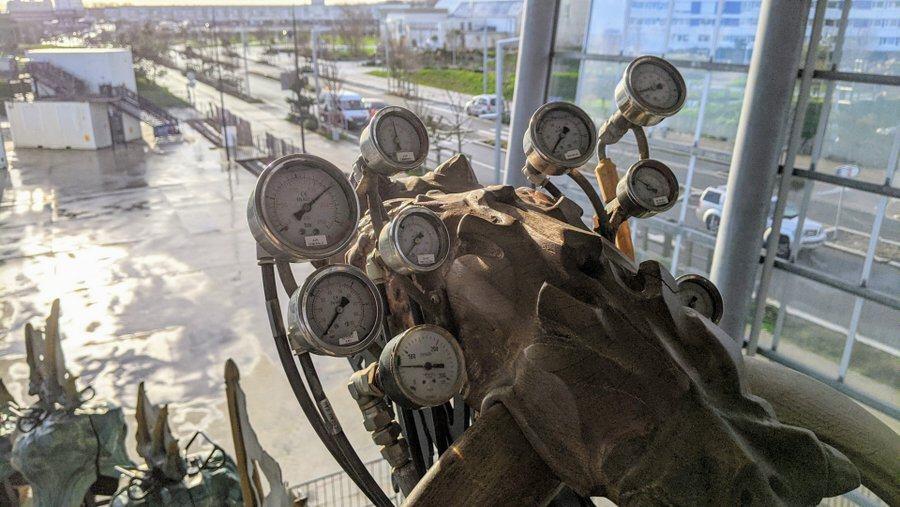
It takes a core crew of 4 to operate it:
- The director, walking in front. He oversees everything and is in headset contact with everyone else. He also has a remote control panel that operates the effects ie. spitting fire, smoke & water.
- The driver who steers the whole machine from his cab underneath at the front.
- The tail operator, on board at the back.
- The head operator, who is barely noticeable in his/her bucket seat on the head, where he/she controls the head and neck.
However the full team on a dragon trip is usually six. It needs the core crew plus two attendants to keep an eye out for stray children, adults or pets who might get too close for safety.
Does the dragon have a personality?
Yes it does. When it arrived in Calais, La Machine presented a 3-day performance in the city during which the, at first aggressive, dragon was calmed by the locals singing to it. But it’s the crews who give it personality. There was a one month handover period during which the local Compagnie du Dragon crews got to learn the basics of operating it. You can see the basic teamwork for example when the head operator begins to raise the neck & head, then the mouth in preparation for the director to fire the flame gun from his remote.
The dragon is only the first of a number of machines coming to Calais.However, as Communications Manager, Stephane Ribeiro da Ascencao points out, the dragon performs differently depending on the mood of the crew and the audience. “Sometimes the dragon is a bit sleepy, or it can be active and aggressive, and then other times it will play to an audience of kids differently than to an audience of adults”.
The Machines de Calais Project
The dragon is only the first of a number of machines coming to Calais. Another ten pieces of urban art – two of them fixed, eight mobile – will draw attention to neglected parts of the town and its history such as the old fortifications, which will now be renovated and opened to the public.
Fort Risban
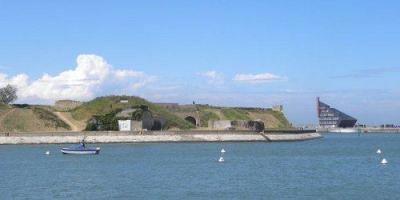
©Office de Tourisme
Calais/Côte d’Opale)
The current base (Cité du Dragon) for the dragon, located at the harbour end of the Calais beach waterfront, is temporary. The ticket office, shop and restaurant will move into the renovated Fort Risban next door, and Delarozière has designed “The Nave”, an elegant glass house for the dragon that looks a bit like an elvish conservatory in Rivendell (Lord of the Rings!). What’s more, it moves! It will look like it’s swelling and breathing as the dragon approaches and then it’ll settle down to be a cocoon when the dragon goes to sleep.
The latest addition to the project is one of the two fixed iguanas in the project. It arrived last September and is temporarily mounted on top of a shipping container.
This iguana is 4 metres long and 1.8 meters high. The public can operate it from a control panel nearby. Six joysticks control the body, tail, neck, head & jaw, and… allow it to spit water. It’ll be hard to get the kids off that one!
Fort Nieulay

(Photo: ©Ville de Calais)
Fort Nieulay, on the outskirts of Calais near Eurotunnel and the huge Cité Europe shopping centre, was built by the English between 1360-1558 as the keystone to a system of defensive canals (it didn’t work! When the French attacked in 1558, the sluices weren’t opened and Calais fell!). It was then enlarged slightly under brief Spanish control (they attacked from the Spanish Netherlands in 1596 and handed it back in 1598). Then Louis XIV’s military architect Vauban arrived in 1699 and turned it into one of those giant star-shaped forts with massive ramparts.
From 1815 to 1870 the fort was abandoned and in 1903 it was rented to farmers. It was briefly re-occupied by the Germans in WW2, and afterwards it was turned into an urban park.
Now the plan is to make it a home for a family of six people-carrying iguanas. The iguanas, each carrying four to six passengers, will move about inside and outside the fort.
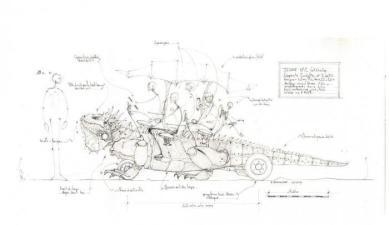
The Dombunker
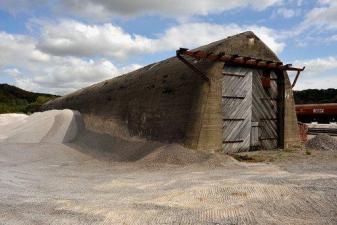
© Chriusha/Хрюша,
CC-BY-SA-3.0)
The Dombunker (“cathedral bunker”) is a large tunnel-shaped concrete hanger built, not far from Fort Nieulay, by the Germans in WW2 and used to house a pair of K5 railway guns (You can see a K5 a few miles away down the coast at the Museum of the Atlantic Wall, aka ‘Batterie Todt’)
When it has been renovated it will house the two large mobile “Varans de voyage” – (genus Varanus) monitor lizards, in this case Komodo dragons. These six metre tall lizards will drive around the other Compagne du Dragon sites and the city itself carrying up to 10 passengers on their backs.

Place Crèvecœur
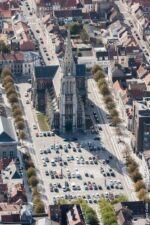
(Photo: ©Ville de Calais)
The last machine of the 5-year/27m Euro project will be the second fixed iguana. This one, “Le Grand Iguane”, will be a larger version of the existing fixed iguana and will be placed in Place Crèvecœur in the Saint Pierre district.
When will the Dragon of Calais start working again?
Well, as in the UK and the rest of Europe, the COVID-19 restrictions and lockdowns are hard to predict, but the Compagnie du Dragon are hoping to get operational again next month. Stephane Ribeiro confirms: “We are still struggling with mixed signals about our potential re-opening, but we will be ready for February 13th!”
* The Dragon de Calais does not have a name. They don’t call it ‘Volgon’ or ‘Elizabeth’ or anything, nor have they given it a sex. You can refer to it as ‘he’ or ‘she’ as you prefer.
** There were in fact TWO elephants. Royal de Luxe is a French mechanical marionette street theatre company founded in 1979 by Jean-Luc Courcoult. They have performed all over the world. In 2005 they created a 3-day performance called ‘The Sultan of the Indies visits on his time travelling Elephant’ (trips off the tongue, eh!) to commemorate the centenary of Jules Verne’s death. It featured a magnificent elephant ‘The Sultan’s Elephant’, a giant puppet girl and several other artworks. The elephant was built by François Delarozière who was a member of the company at the time. Over a two year period, the show was performed in six cities, including London and Calais, and then, wanting to move on to new things, the elephant was destroyed. Around the same time there was a parting of the ways over artistic differences. Delarozière set up his own company, La Machine, and re-built a new version of the elephant (Le Grand Elephant) for continuous performances at the old dockyard on the Isle de Nantes.

